How news organizations are (or are not) covering the growing — and vital — pro-democracy movement. The good, the bad and the ugly.
The New York Times leadership still minimizes the battle of fascism vs. democracy. Some local outlets are doing a better job. Plus a tragic lack of insight from the NPR Public Editor.
The same media institutions and newsroom leaders that fail to respond to a constitutional crisis and fail to stand up for American democracy in its existential battle against oligarchy and the fascist MAGA movement are insufficiently covering the pro-democracy movement. Combined, these two media failures enable the dismantling of American democracy.
“…many on the left have bemoaned…” Actual New York Times subheading from NYT online 4/5/2025. Edits captured by "Editing the Blue-Gray Lady,” a bot highlighting changes to the New York Times’ “Top Stories" feed.
Americans are building a broad grassroots resistance to the Trump-Musk regime in their cities and towns by standing up for their freedoms, their families, their communities, and American democracy itself. History shows that civic demonstrations are a potent force to combat and defeat authoritarianism and Americans are developing the community and skills to do this at a republic-saving scale. However, Big Journalism outlets are still failing to adequately cover “The Big Story” of American constitutional democracy on the brink of collapse into a competitive autocracy and are abdicating their Fourth Estate roles. By and large they fail to communicate the importance of the pro-democracy movement and of Americans taking to the streets in large numbers in community. The momentous mobilization of April 5 was better covered by local news organizations than national outlets (read/share our blog post).
Giving prominent and regular coverage to the pro-democracy movement is not partisan, it’s a duty of a credible Fourth Estate.
Americans across the nation are now routinely engaging in civic demonstrations and the largest since April 5 took place just two weeks later, on April 19. The story that millions of Americans again took to their streets and joined communally to demonstrate in support of the rule-of-law, migrants rights, due process, American democracy and against oligarchy and tyranny on the 250th anniversary of the American Revolution is - at the very least – an ongoing story worth prominent media coverage. Given the context of the daily assaults on Americans freedoms, democracy, well-being and decency - such a much-needed positive development warranted communicating to the country and to those who did not participate. The coverage of 4/19 demonstrations was once again better at the local level and consistently woefully inadequate at the influential New York Times and only slightly better at the Washington Post. The Times front page on 4/20 had zero mentions or indications of the pro-democracy movement and its story ran on A28. The Post had one sentence on A1 leading to its coverage buried in the depths of its pages.
On the 4/20 New York Times homepage: plenty of interesting subjects including photos and a feature “Springtime exoflowers are blooming” on a *nonexistent* world. Isn’t the resistance movement advocating for democracy itself, here on earth a bigger story? Zero coverage of the pro-democracy movement.
On the 4/20 Washington Post homepage: Excellent transitory coverage. An accurate title and solid layout and even featured a powerful photo. Too bad this editorial decision did not carry over to the print edition. This coverage vanished online in less than 14 hours.
Good news! On the 4/20 Associated Press homepage: Excellent coverage, priority news item, accurate title and solid layout and even featured a powerful photo. Excellent photo montage from across the country. Lasted almost 24 hours.
NPR Public Editor exposes dangerous blind spot to covering the pro-democracy movement.
MAD members are advocates for public media and defend public media against the persistent efforts to defund PBS and NPR by Trump and Republicans. We have advocated that all newsrooms should have a public editor to help build trust in news coverage. But this does not blind us to a problematic blind spot in NPR coverage of the pro-democracy movement. We are grateful that NPR does have a Public Editor and we have called for the New York Times to reinstate its public editor. But on April 10, NPR Public Editor Kelly McBride communicated a shocking perspective on the massive April 5 demonstration.
An analysis.
Context. Context. Context. In McBride’s explainer about NPR’s coverage there are zero mentions of relevant context for the moment: “fascism,” “constitutional crisis,” “authoritarianism,” or “democracy”. This demonstrates that McBride is either a) unaware of the stakes of the aspirations of these demonstrators or b) indifferent to the outcome. We hope she will brush up on the works of Maria Ressa, Jason Stanley, and Ruth Ben-Ghiat and advise the NPR newsroom to adjust coverage to meet the rising tide of authoritarianism in the U.S.
The national pro-democracy movement mobilizing against authoritarianism is “not compelling”? On April 5 *3-5 million Americans* took to the streets to stand up for American democracy against a fascist movement. “As a news event, it wasn’t very compelling.” It’s curious that McBride didn’t mention discussions with any of the 100,000+ New Yorkers marching past her, whose pictures and videos she did find compelling.
A duty to inform vs. choosing to deprive people of important information. Acknowledging that people are not informed about the demonstrations— and yet not changing coverage or expressing a duty to inform Americans about the pro-democracy movement—is in effect choosing to dampen engagement in the movement.
Mind-boggling math. Americans’ lives, global standing, and democracy itself is the motivation here—not some vague “discontent.” What percentage of the population of “news consumers” mobilizing to reject fascism would warrant more sustained, more in-depth coverage of the pro-democracy movement?
We would very much like to know whom Ms. McBride would offend—or what editorial line would be crossed—if NPR covered and prioritized the pro-democracy movement more than it currently does? Is McBride familiar with Erica Chenoweth and the 3.5% population threshold for pro-democracy movements to topple authoritarianism?
“Mass protests deserve more than a photo essay and a shrug. They deserve substantive coverage that explains the issues at stake and amplifies the voices of those affected. Otherwise, what's the point of journalism at all?”
-Parker Malloy in The Present Age
Will Bunch at the Philadelphia Inquirer demonstrates how to cover the pro-democracy movement
Will Bunch wrote an excellent piece profiling some of the remarkable humans who are showing up at the events; including some 90-year olds and Holocaust survivors.
This is a crisis. News organizations must make that explicitly clear. Every day.
In addition to sounding an alarm that democracy is under attack and at risk, news outlets should also elevate and amplify the individuals, organizations, and movement mobilizing in support of democracy. Not to do so is a Fourth Estate dereliction of duty.
Demonstrations to energize the pro-democracy movement are happening almost every weekday and every weekend across the country—some large and organized, some smaller and informal—all important efforts - and certainly compelling to those who fear for American democracy and the stakes of the success of the movement.
Good news! Local news organizations did a better job.
Local news outlets and their courageous editors did a much better job covering the significance of the April 5 day of civic action. They continue to be sentinels and beacons of the reality of what’s happening in America and providing context to their readers. Here is how the April 19 national day of action was covered on front pages of several local papers:
Additional reading on coverage of the pro-democracy movement:
4/7/2025 Print Media to Mass Protests: “Please Turn to Page 18 Parker Malloy in The New Republic
4/7/2025 Big protests — but not big news. Margaret Sullivan in her blog American Crisis
4/7/2025 Local news outlets show the New York Times how to cover the growing pro-democracy movement. The Media and Democracy Project blog
4/18/2025 . "Not Very Compelling": How NPR's Public Editor Dismissed the Largest Protests of 2025” Parker Malloy in The Present Age
Your pro-democracy actions in support of a better-informed America:
Diplomatically share your perspective with Ms. McBride: We love public editors but when we disagree we respectfully reach out - so we suggest you contact the NPR Public Editor here. A related question worth asking: is there a red line that could lead NPR leadership to switch gears to become partisan for democracy?
Ask the media oligarch who runs the New York Times why his “paper of record” is apathetic on fascism and democracy: Send a letter to A.G. Sulzberger - ask him if he has a red line that could lead him to switch gears at NYT to meaningfully cover the pro-democracy movement besides on A20 and A28 and might even become partisan for democracy?
Arthur G. Sulzberger
The New York Times Company
620 Eighth Avenue
New York, NY 10018
Support local journalism. Local news outlets are doing a better job. Match your media diet with your values—support local and independent news outlets, use and share our searchable 50-state local journalism directory https://www.mediaanddemocracyproject.org/journalism-directory








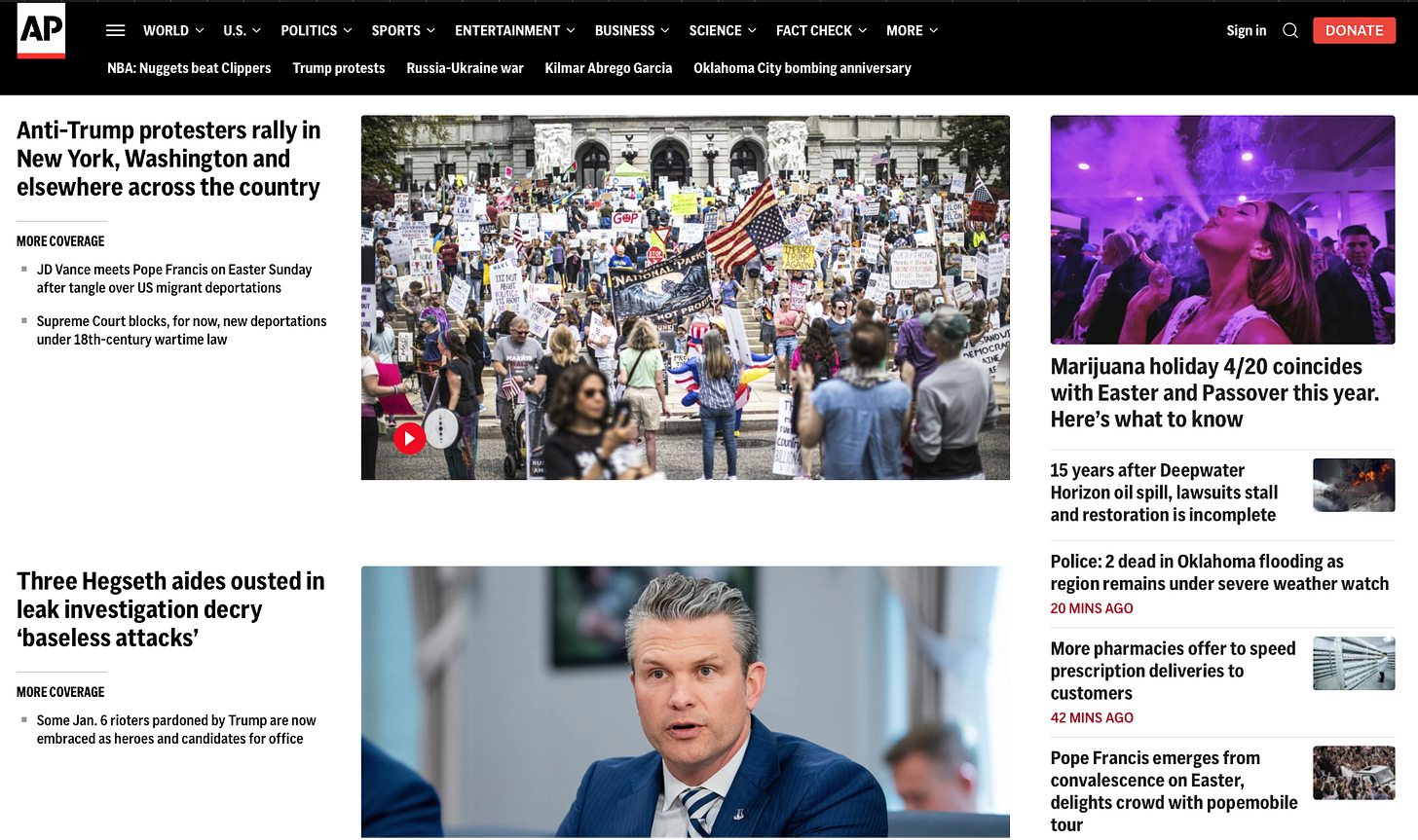
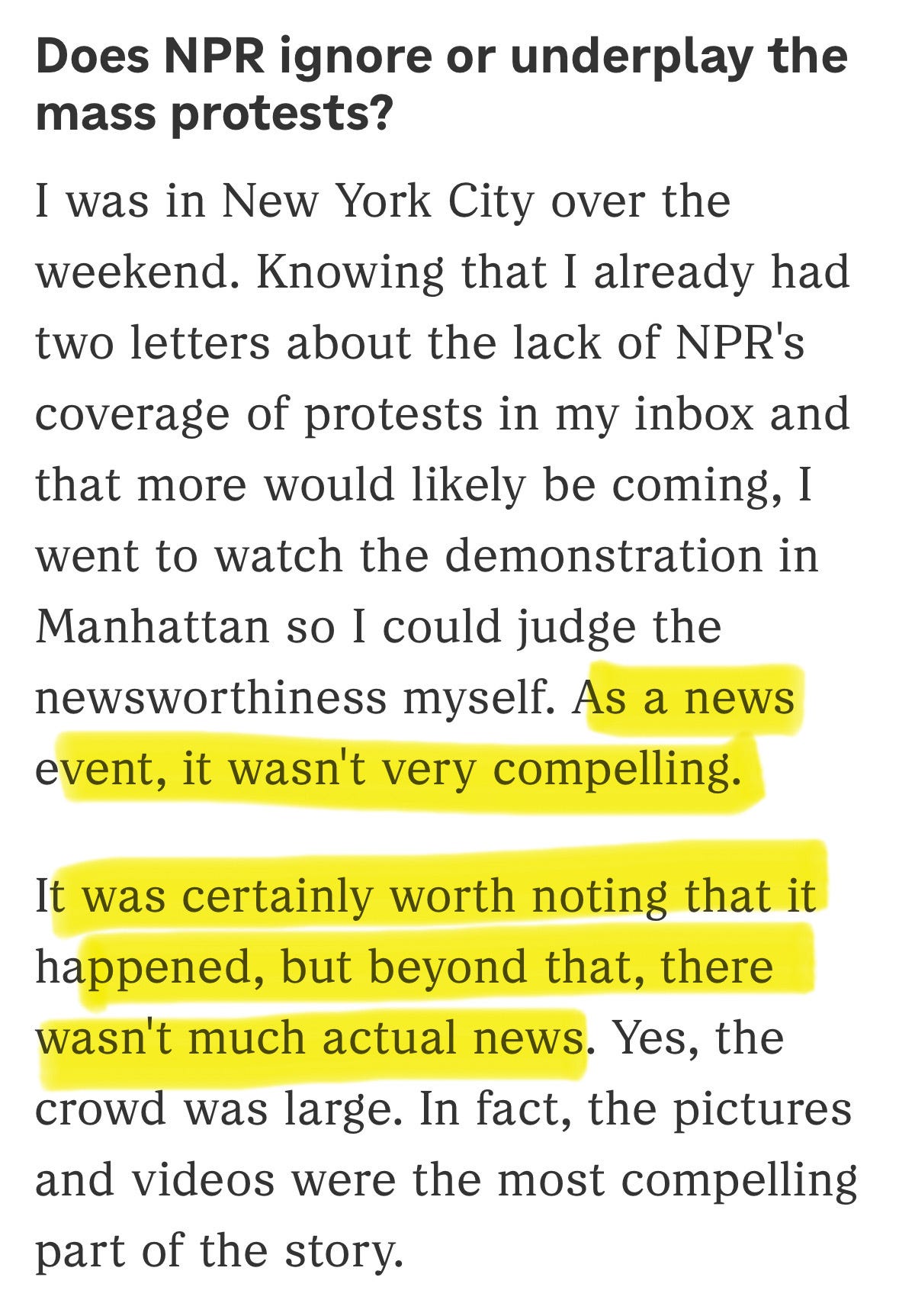

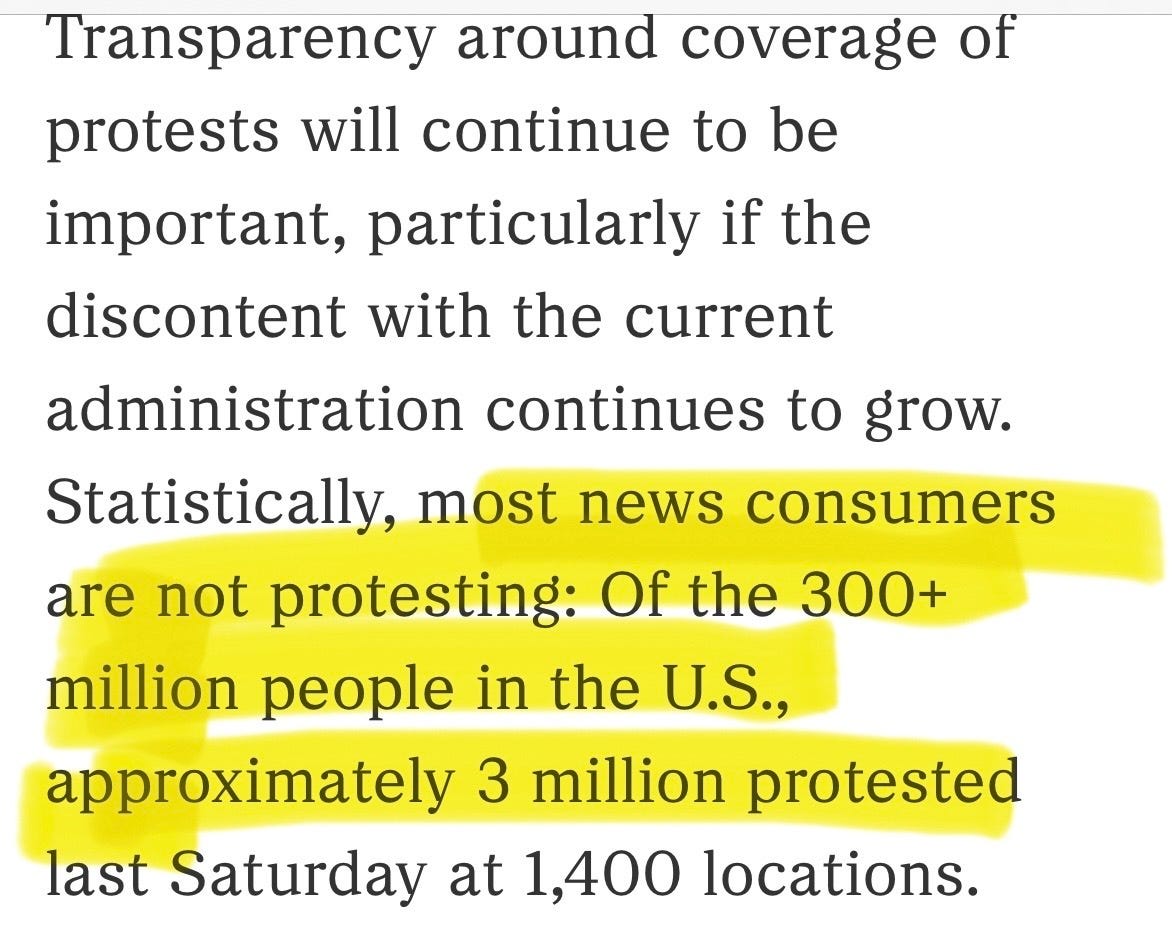
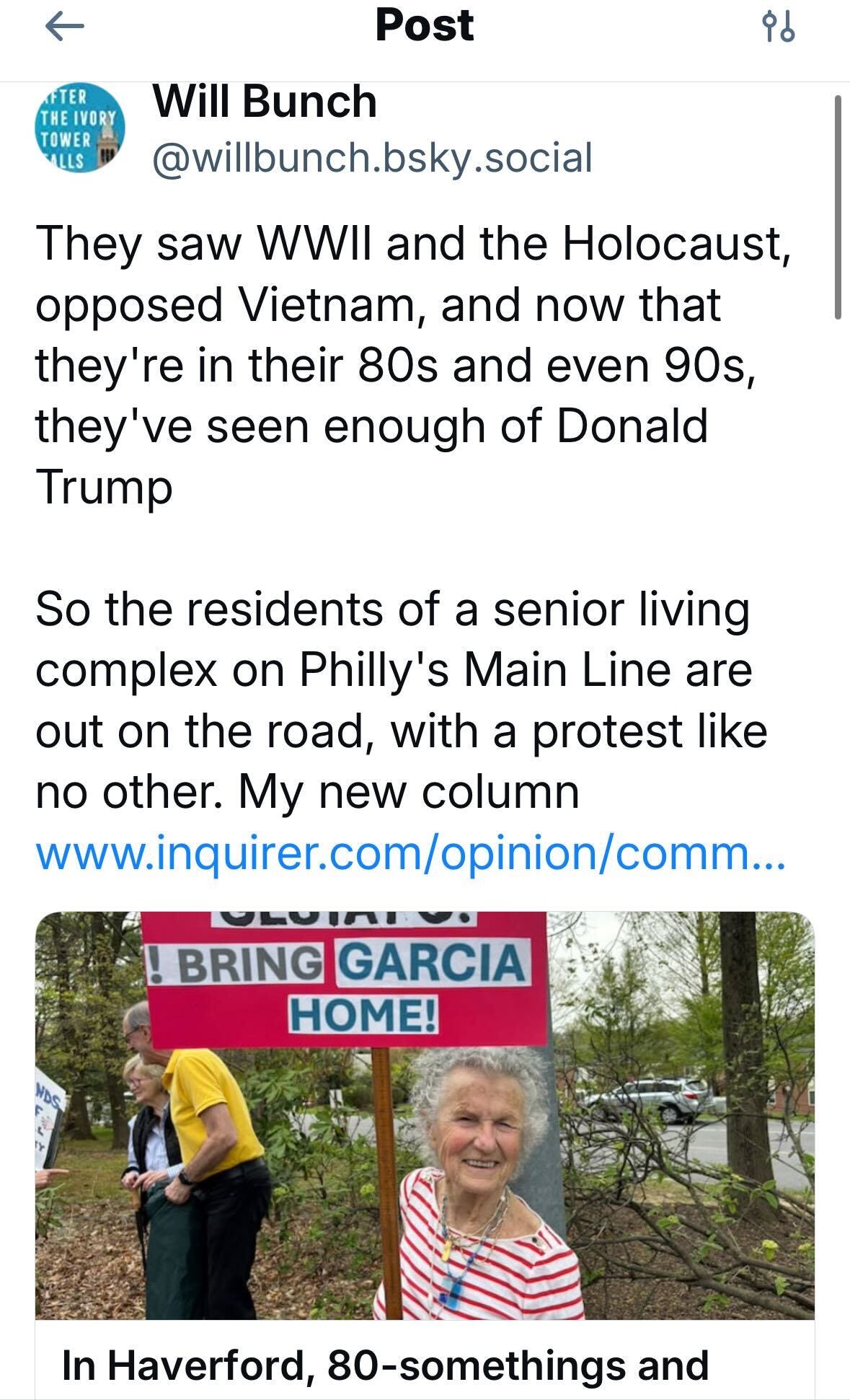


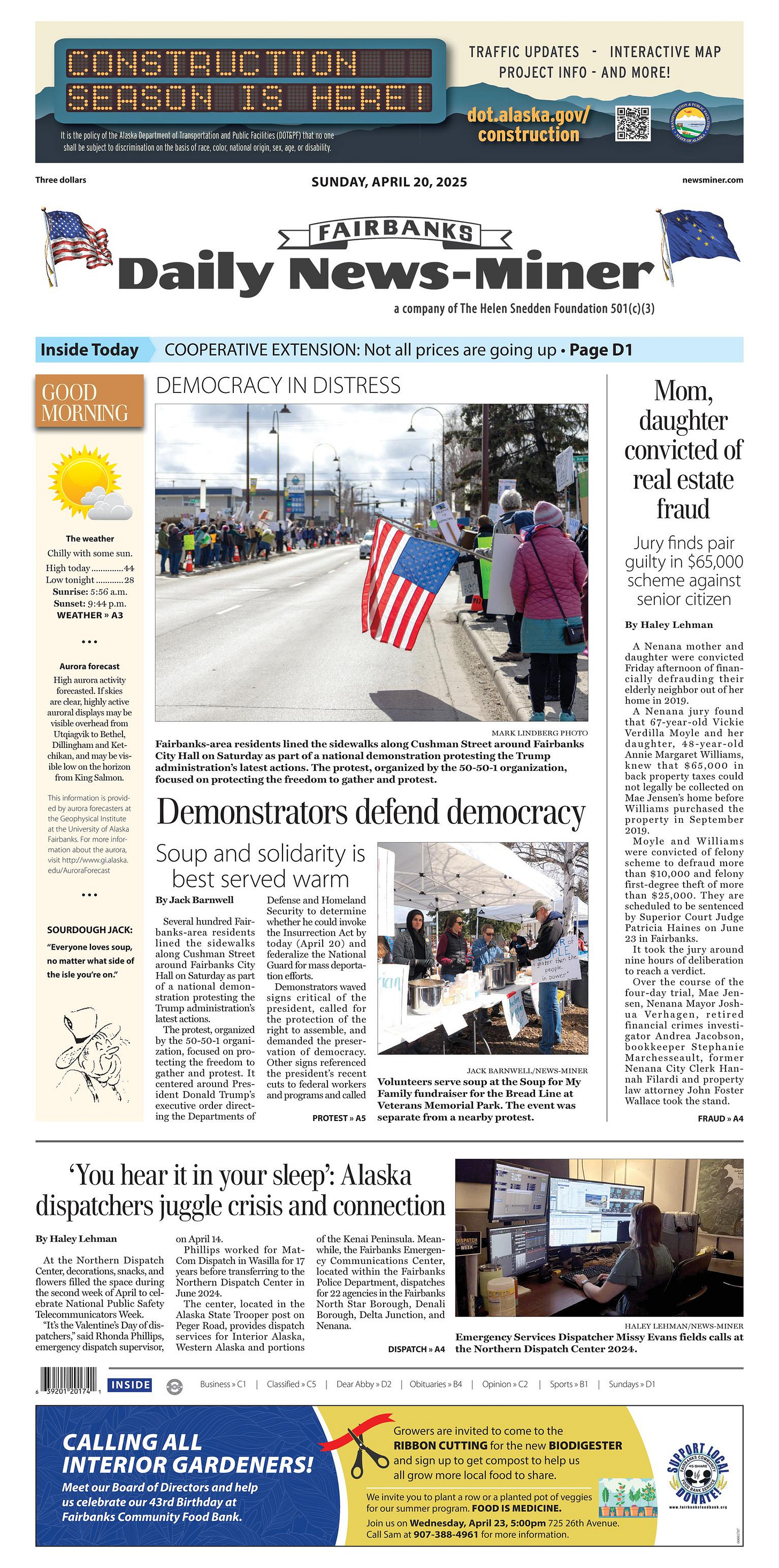

Horrifying and yet galvanizing. CALL THEM OUT!!!
Great work! Thank you! Corporate media is failing.